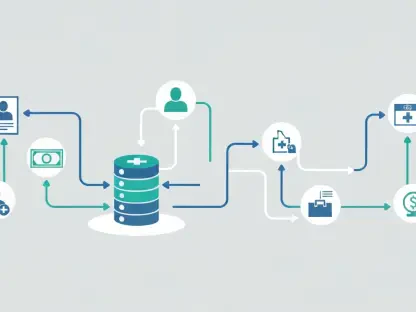The software development landscape is evolving, and with it comes the need for enhanced guidelines and tools to ensure code safety, security, and quality. In response to these demands, LDRA has integrated the latest MISRA C:2023 guidelines into its static code analysis tools. This move is particularly significant for embedded developers working in high-stakes industries such as aerospace, defense, industrial, energy, medical devices, and automotive. By incorporating MISRA C:2023, LDRA aims to help developers identify and mitigate potential hazards in complex multithreaded and multiprocessor systems, thereby advancing the overarching goals of software safety and quality.
Evolution of MISRA C Guidelines
Introduced in 1998, MISRA C has become a cornerstone in the development of high-quality software using the C programming language. Over the years, the guidelines have evolved to incorporate new practices and respond to the changing needs of software developers. The latest version, MISRA C:2023, consolidates all previous guidelines to streamline compliance processes and make it easier for developers to follow best practices. This consolidation aims to simplify the adherence process, allowing developers to focus more on innovation and less on navigating a labyrinth of regulations. Along with a comprehensive set of best practices, MISRA C:2023 has positioned itself as an indispensable framework for developing secure and reliable software.
MISRA C:2023 addresses contemporary issues such as multithreading and atomic types, marking a significant advancement in the guidelines. This consolidation reduces the complexity associated with adhering to multiple sets of guidelines, providing a one-stop resource that streamlines the development process while maintaining stringent safety and security standards. By focusing on modern programming challenges and incorporating these aspects into a unified set of guidelines, MISRA C:2023 facilitates a smoother compliance journey. Developers can now more easily navigate the intricacies of modern software development languages and practices, ensuring that their code remains robust and resilient.
Key Features of MISRA C:2023 and AMD4
MISRA C:2023 isn’t just a consolidation; it introduces new rules and directives aimed at modernizing software development practices. One significant addition is MISRA C:2012 Amendment 4 (AMD4), which specifically targets rules and directives for multithreading and atomic types. AMD4 offers clarifications on existing guidance, ensuring developers have a clear understanding of best practices in a multithreaded environment. The introduction of AMD4 into the broader MISRA C:2023 framework underscores the need to address prevalent concerns in contemporary C language usage. It’s designed to provide developers with a robust set of guidelines for navigating the complexities of multithreading and atomic operations.
Developers need to be cautious about handling multithreading and atomic operations as they can introduce race conditions and other concurrency issues. AMD4 helps mitigate these risks by providing clear guidelines for safe programming practices, making it easier to develop robust and error-free code. Through the directives contained within AMD4, developers receive practical advice on avoiding pitfalls associated with concurrent programming. This amendment not only reinforces the stringent standards required for safety-critical applications but also simplifies the process of achieving a high degree of code reliability and maintainability.
Integration with LDRA Tools
LDRA’s tool suite now incorporates MISRA C:2023 guidelines, significantly enhancing its static code analysis capabilities. These tools are designed to help embedded developers identify areas of non-conformant code and provide the necessary resources to document and make required modifications, thereby ensuring compliance with the latest standards. The integration of these guidelines into LDRA’s suite offers a comprehensive solution that automates much of the compliance process, making it less burdensome for developers to adhere to stringent standards. As a result, developers can channel more of their efforts toward innovation and less towards meticulous manual code checks.
The integration allows developers to automate much of the compliance process, freeing them to focus on innovation rather than on tedious manual checks. By flagging potential issues early in the development cycle, LDRA’s tools enhance productivity and reduce the chances of costly errors later on. This feature not only saves time but also significantly reduces the risk of introducing vulnerabilities or defects into the final product. Moreover, by ensuring early-stage compliance, developers find it easier to maintain consistency in code quality throughout the development lifecycle, giving them a competitive edge in delivering reliable and secure software.
Enhanced Reporting and Analysis Capabilities
One of the standout features of the upgraded LDRA tools is their enhanced reporting and analysis capabilities. These tools now offer detailed reports and graphical displays that provide a clearer understanding of source code in the context of MISRA guidelines. This makes it easier for developers to identify and rectify non-compliance issues. The graphical reports offer a visual summary that can be quickly interpreted, allowing for faster iteration and more efficient problem-solving. This high level of transparency in how the code conforms to MISRA standards presents an invaluable resource for development teams aiming to meet stringent compliance requirements efficiently.
Additionally, the tools support structural coverage analysis, ensuring that the extent of tested code meets the stringent requirements set by MISRA. This feature is particularly beneficial in safety-critical domains, where comprehensive testing and validation are essential. Structural coverage analysis helps ensure that all pathways and scenarios within the code are thoroughly examined, leaving no stone unturned in verifying the software’s reliability and robustness. These features make LDRA’s tools indispensable for maintaining high standards of code quality in applications where failure is not an option.
Practical Benefits for Various Industries
The incorporation of MISRA C:2023 into LDRA’s tools holds significant practical benefits across multiple industries. Sectors like aerospace and defense, where software reliability and security are non-negotiable, stand to gain immensely from these advancements. The tools help ensure that the software meets the highest standards of safety, significantly reducing the risk of malfunctions or security breaches. In industries where even a minor software glitch can have catastrophic consequences, adhering to MISRA C:2023 through LDRA’s tools offers an added layer of security and reliability.
In the medical devices industry, where software errors can have dire consequences, adherence to MISRA guidelines ensures that devices operate reliably and safely. Similarly, in the automotive sector, where software controls critical functions, these tools help manufacturers produce more reliable and secure vehicles. The ripple effect of enhanced code quality in these industries is profound, potentially improving patient outcomes in healthcare or elevating vehicle safety standards in automotive manufacturing. The wide-ranging applications of these tools highlight their versatility and essential role in high-stakes environments.
Future Outlook and Industry Impact
The landscape of software development is constantly changing, necessitating better guidelines and advanced tools to ensure the safety, security, and quality of code. Addressing these critical needs, LDRA has embedded the latest MISRA C:2023 guidelines into its static code analysis tools. This update holds particular importance for embedded developers in high-stakes sectors like aerospace, defense, industrial, energy, medical devices, and automotive industries. The integration of MISRA C:2023 by LDRA is designed to aid developers in identifying and mitigating potential hazards in intricate multithreaded and multiprocessor systems. By doing so, it significantly advances the overarching objectives of enhancing software safety and quality. As software systems grow more complex, particularly in industries where failure can have grave consequences, such rigorous guidelines and tools are indispensable. Overall, LDRA’s adoption of MISRA C:2023 represents a crucial step forward in ensuring that the software not only meets but exceeds the high standards required for safety-critical applications.









